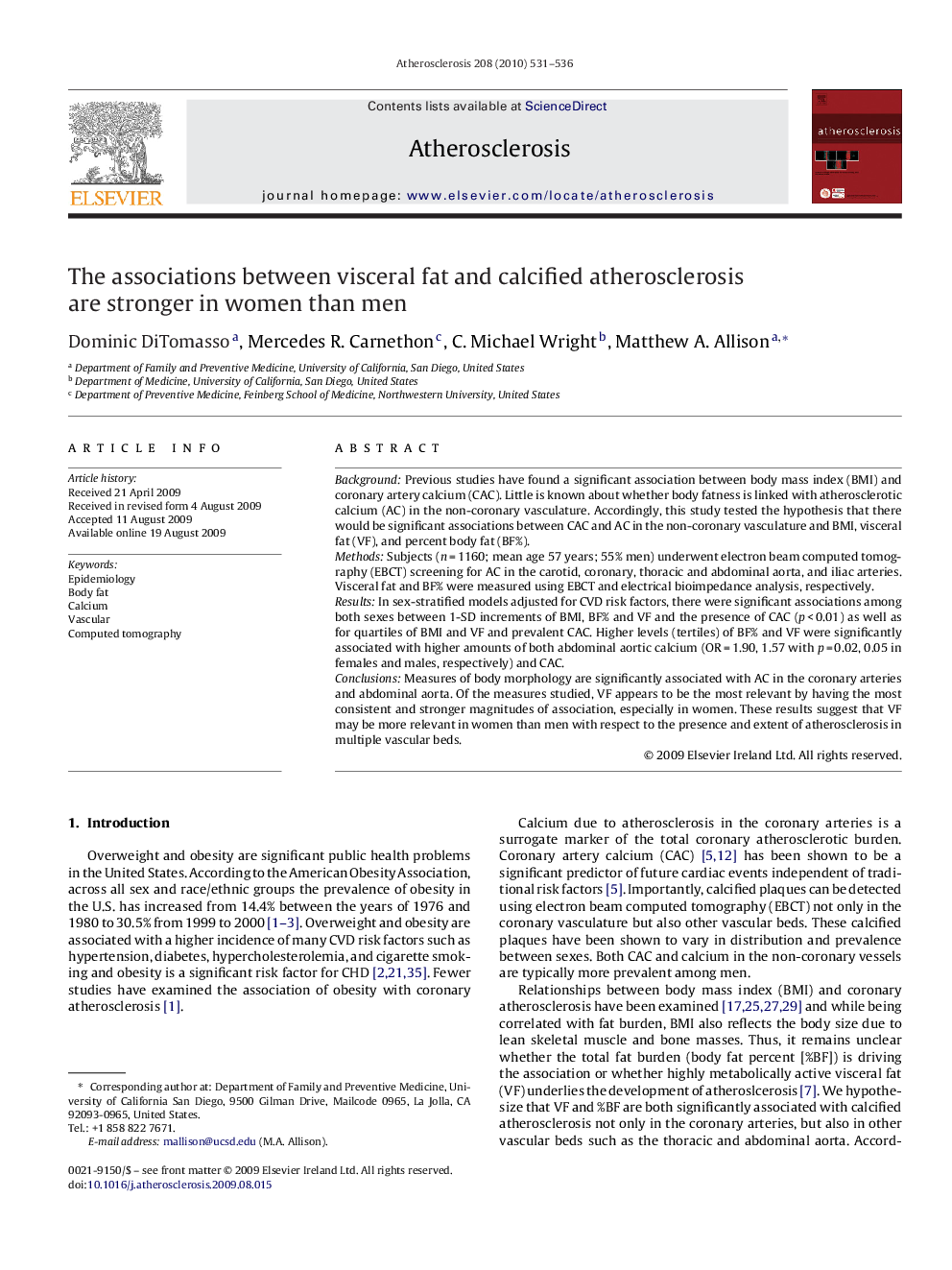| Article ID | Journal | Published Year | Pages | File Type |
|---|---|---|---|---|
| 5951263 | Atherosclerosis | 2010 | 6 Pages |
BackgroundPrevious studies have found a significant association between body mass index (BMI) and coronary artery calcium (CAC). Little is known about whether body fatness is linked with atherosclerotic calcium (AC) in the non-coronary vasculature. Accordingly, this study tested the hypothesis that there would be significant associations between CAC and AC in the non-coronary vasculature and BMI, visceral fat (VF), and percent body fat (BF%).MethodsSubjects (n = 1160; mean age 57 years; 55% men) underwent electron beam computed tomography (EBCT) screening for AC in the carotid, coronary, thoracic and abdominal aorta, and iliac arteries. Visceral fat and BF% were measured using EBCT and electrical bioimpedance analysis, respectively.ResultsIn sex-stratified models adjusted for CVD risk factors, there were significant associations among both sexes between 1-SD increments of BMI, BF% and VF and the presence of CAC (p < 0.01) as well as for quartiles of BMI and VF and prevalent CAC. Higher levels (tertiles) of BF% and VF were significantly associated with higher amounts of both abdominal aortic calcium (OR = 1.90, 1.57 with p = 0.02, 0.05 in females and males, respectively) and CAC.ConclusionsMeasures of body morphology are significantly associated with AC in the coronary arteries and abdominal aorta. Of the measures studied, VF appears to be the most relevant by having the most consistent and stronger magnitudes of association, especially in women. These results suggest that VF may be more relevant in women than men with respect to the presence and extent of atherosclerosis in multiple vascular beds.
